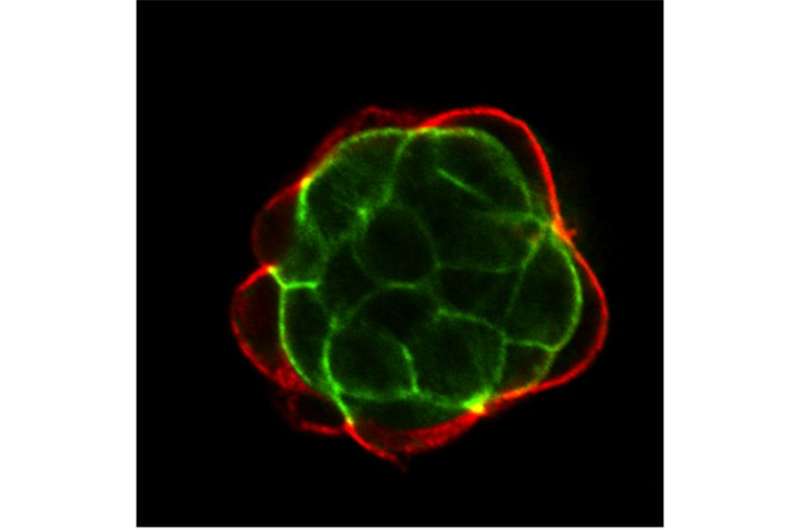The source of stem cells points to two proteins

Mammalian embryos are unlike those of any other organism as they must grow within the mother's body. While other animal embryos grow outside the mother, their embryonic cells can get right to work accepting assignments, such as head, tail or vital organ. By contrast, mammalian embryos must first choose between forming the placenta or creating the baby.
New research at Michigan State University and published in the journal eLife has pinpointed two proteins that are the keys to this decision making. The process of assigning cells to placenta or baby is important because that is when pluripotent cells are made. These adaptable pluripotent cells are critical to stem cell research, and these two proteins could be the key to deciphering how pluripotent cells are born, said Amy Ralston, MSU's inaugural James K. Billman Jr., M.D. endowed professor and the study's senior author.
"Pluripotent cells are the progenitors of embryonic stem cells, and they are famous because they can become any part of the body," she said. "We have discovered a process that regulates the balance between pluripotent and placenta, and it works by changing the physical location of cells within the embryo's ball of cells."
To form this wondrous ball, the mother packages two closely related proteins into her eggs, which help oversee this decision-making process. The scientific team used genetic tools to eliminate the proteins YAP1 and WWTR1 from mouse eggs and embryos. The team discovered that these two proteins first position these cells into distinct inside and outside locations, which then decides their fate: placenta or pluripotent.
Each phase of Ralston's research peels back a layer into the creation of stem cells, a process that nature performs with 100 percent efficiency. On the other end of the spectrum, lab-created stem cells are created with 1 percent efficiency.
"Obviously, our understanding of how nature creates stem cells is incomplete," said Tristan Frum, MSU biochemist and molecular biologist, who performed the study along with Tayler Murphy, MSU genetics graduate student. "We've suspected these proteins were involved in creating stem cells, but our work reveals that they do so in a surprising way."
Cells of the early embryo express proteins that make them "stick" to the outside of the embryo.
"We've identified a way that cells evade this stickiness, crawl inside the embryo and acquire the properties that make stem cells so interesting and useful," Frum said.
The study highlights the properties of the cell membrane in stem cells, which determines where they stick.
"When we make stem cells in the lab, they must acquire a unique cell membrane. Our work shows how nature does this and provides clues that can guide us to control stem cells more efficiently for use in medicine," Frum said.
For example, the team's discoveries could lead to advances in stem cell technologies using organoids, which are stem cell-derived mini organs. Organoids are an exciting new paradigm in stem cell and regenerative medicine, Ralston said.
"The similarities between embryos and organoids are remarkable," Ralston said. "Therefore, by studying how the mouse embryo builds itself, we may one day build organs from human stem cells."
More information: Tristan Frum et al. HIPPO signaling resolves embryonic cell fate conflicts during establishment of pluripotency in vivo, eLife (2018). DOI: 10.7554/eLife.42298
Journal information: eLife
Provided by Michigan State University



















